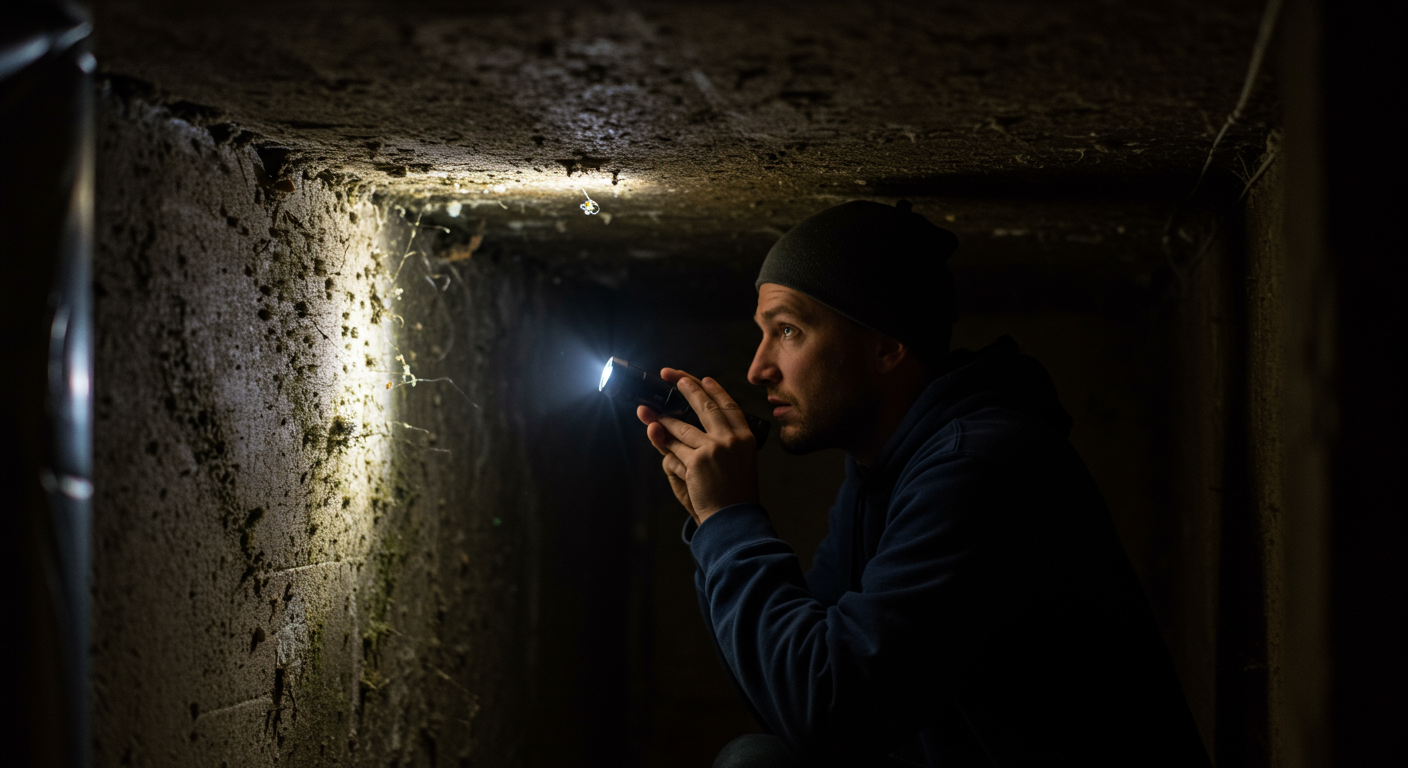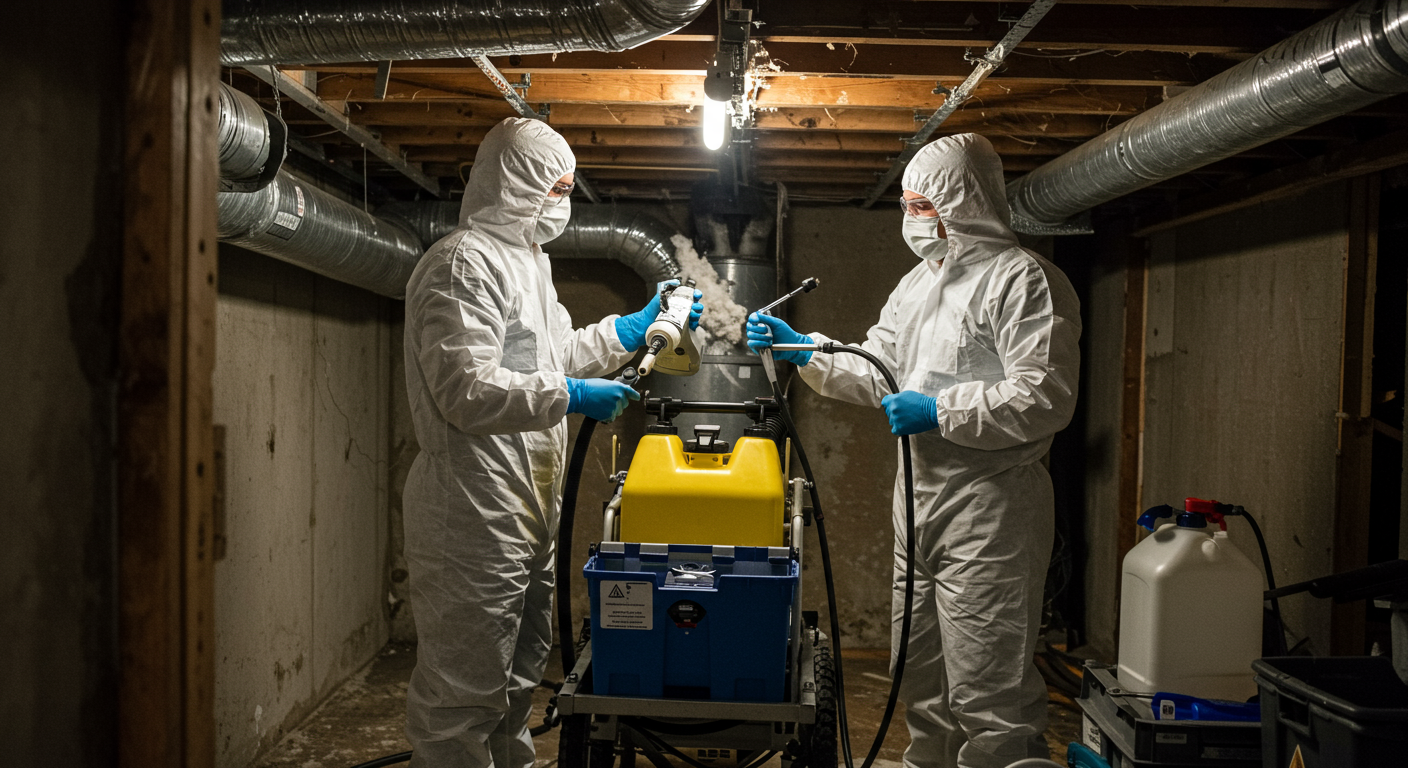Mold is a persistent issue that can affect any home, especially in areas like Nampa, ID, where seasonal weather changes and humidity levels create the perfect environment for mold growth. This guide is designed to help homeowners understand the risks associated with mold, how to identify it, and the steps necessary for remediation and prevention. By taking proactive measures, you can protect your home and health from the dangers of mold.
Understanding Mold and Its Risks in Nampa, ID
Mold is a type of fungus that thrives in damp, humid environments. It can grow on various surfaces, including walls, ceilings, and furniture, and poses significant risks to both health and property.
Health Effects of Mold Exposure
Exposure to mold can lead to a range of health issues, particularly for individuals with allergies, asthma, or compromised immune systems. Common symptoms include respiratory problems, skin irritation, and headaches. Prolonged exposure can exacerbate these conditions and lead to more severe health complications. Protecting your family from mold exposure is crucial for maintaining a healthy living environment.
Structural Damage Caused by Mold
Mold doesn’t just affect your health—it can also cause extensive damage to your home. It weakens structural materials like wood and drywall, leading to costly repairs. Over time, unchecked mold growth can compromise the integrity of your home, making early detection and remediation essential.
Identifying Mold Growth: Signs and Symptoms
Detecting mold early can save you from significant health risks and expensive repairs. Knowing the signs of mold growth is the first step in addressing the problem.
Common Indicators of Mold Presence
Mold often reveals itself through visible signs, such as black, green, or white spots on walls, ceilings, or furniture. A musty odor is another common indicator of mold growth. Additionally, peeling paint, warped wood, and water stains may signal hidden mold issues.
How to Conduct a Preliminary Mold Inspection
Conducting a preliminary inspection involves checking areas prone to moisture, such as basements, bathrooms, and kitchens. Look for discoloration, water damage, or a persistent musty smell. If you suspect mold but can’t locate it, consider hiring a professional for a thorough inspection.

Mold Remediation Process: Steps to Take
Once mold is identified, it’s essential to act quickly to prevent further spread. The remediation process involves several critical steps to ensure your home is mold-free.
Professional Mold Testing and Assessment
Hiring a professional mold testing service is the most reliable way to assess the extent of the problem. Experts use advanced tools to detect mold in hidden areas and provide a detailed report on the severity of the issue.
DIY Mold Removal Techniques
For small mold infestations, DIY methods can be effective. Use a mixture of water and vinegar or a commercial mold remover to clean affected surfaces. Always wear protective gear, including gloves and a mask, to avoid exposure to mold spores.
When to Call in the Experts
For extensive mold growth or cases involving toxic mold, it’s best to call in professionals. They have the expertise and equipment to safely remove mold and prevent it from returning. If you’re dealing with water damage, consider exploring comprehensive water restoration services in Nampa, ID for a holistic solution.
Preventing Mold Growth in Your Nampa Home
Prevention is the key to avoiding mold-related problems. By implementing effective strategies, you can create an environment that discourages mold growth.
Effective Moisture Control Strategies
Controlling moisture is the most critical step in mold prevention. Fix leaks promptly, use dehumidifiers in humid areas, and ensure proper drainage around your home. Regularly inspect your roof, plumbing, and foundation for signs of water damage.
Importance of Proper Ventilation and Maintenance
Good ventilation is essential for reducing indoor humidity levels. Use exhaust fans in bathrooms and kitchens, and open windows whenever possible to improve airflow. Regular maintenance, such as cleaning gutters and checking HVAC systems, also helps prevent mold growth.
Seasonal Tips for Mold Prevention in Nampa
Nampa’s seasonal weather changes require specific prevention measures. During the rainy season, keep an eye on areas prone to leaks or flooding. In winter, ensure your home is adequately insulated to prevent condensation. For more insights, check out this guide to water remediation in Nampa, ID.
Mold is a serious issue that requires immediate attention. By understanding its risks, identifying signs of growth, and taking proactive steps for remediation and prevention, you can protect your home and health. Whether you’re dealing with a minor infestation or a severe mold problem, this guide provides the tools and knowledge you need to address the issue effectively. Stay vigilant, and don’t hesitate to seek professional help when necessary.


